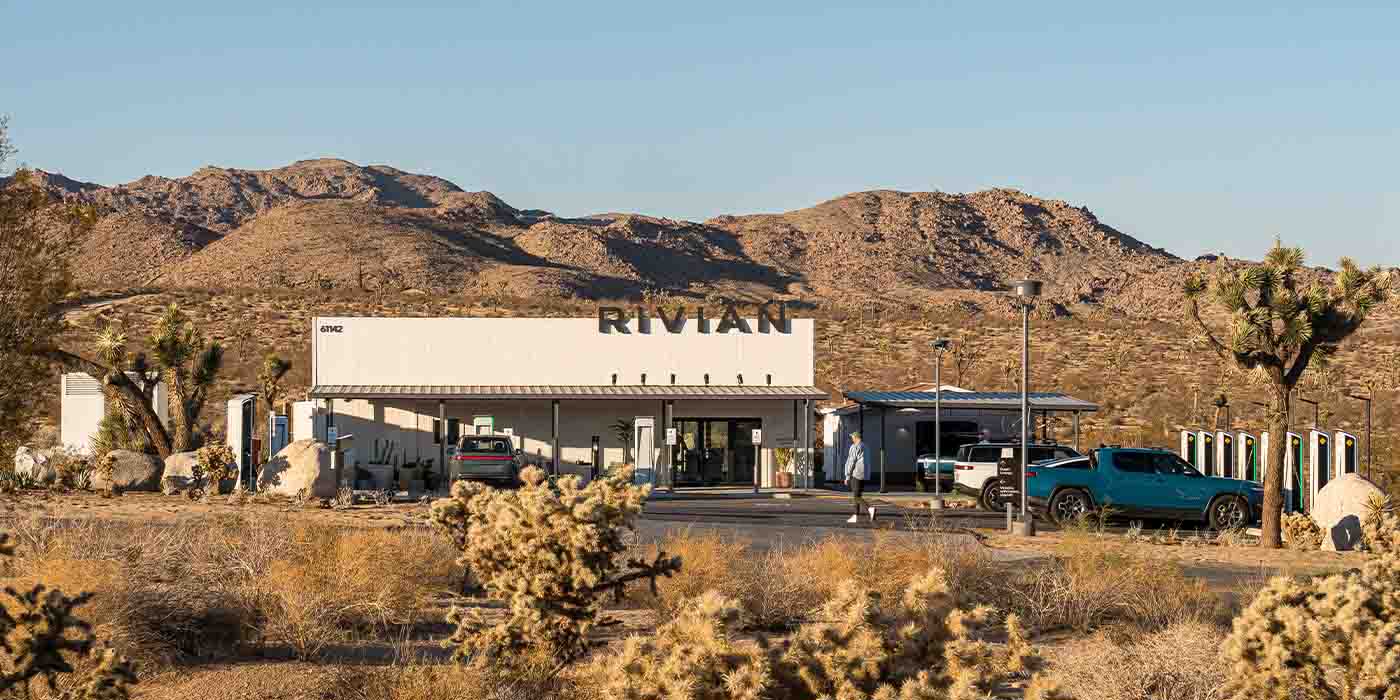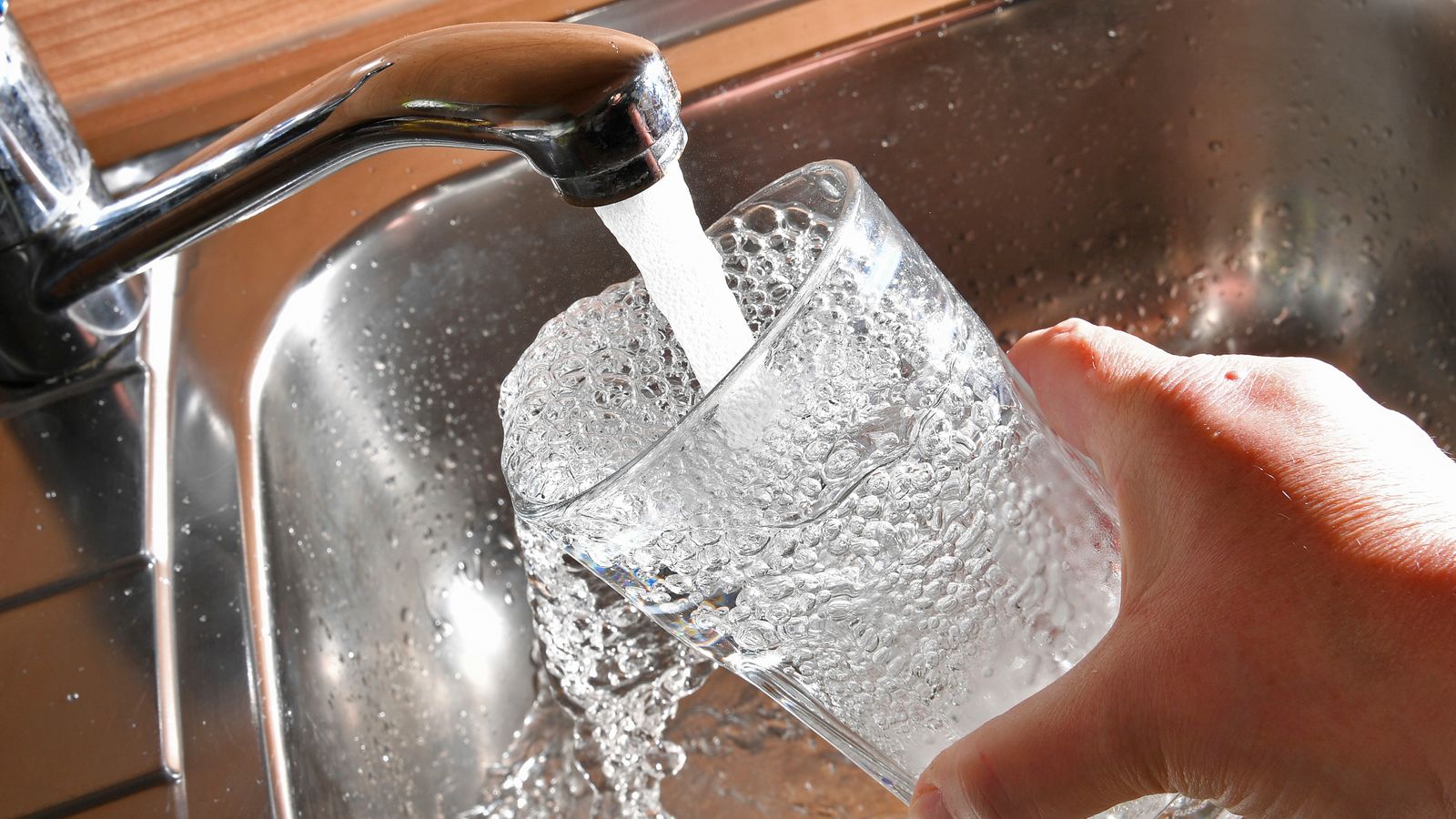
Rivian has started adding Tesla/NACS cables to its Rivian Adventure Network, now allowing Tesla vehicles and other brands with NACS ports to charge on Rivian’s charging network.
The North American EV industry is currently in the process of switching over to a new plug type. As of this moment, most EVs use J1772, and CCS for fast charging. But virtually every brand has announced that they intend to change over to using the NACS port, first advanced by Tesla and now an official SAE standard.
The transition happened largely thanks to President Biden’s federal charging grants, the money within which influenced Tesla to open up its network in the first place, since it is only available to charging networks open to multiple brands.
The NACS connector has a lot of advantages over the previous connector, and is already used by about half of the fast chargers in North America. Previously, NACS chargers were only open to Tesla vehicles, but Tesla has been rolling out access to other brands, with many having gained access or slated to gain access this year.
It has started off with brands offering adapters that allow cars with non-NACS ports to plug into NACS connecters, but now we’re seeing cars with native NACS ports. In the coming months and years, we’re likely to see more and more cars with native NACS ports.
One of those vehicles will be the 2026 Rivian R1 series. We recently saw some image leaks of the upcoming Rivians, and those images included a NACS port. Rivian’s future vehicles are also expected to include NACS ports (as we were the first to report when yours truly spotted a NACS port at the R2 unveil event).
But Rivian also runs its own charging network, the Rivian Adventure Network (RAN), which started off being open only to Rivian cars, but has recently started opening to other brands as well. Rivian CEO RJ Scaringe told us in a recent roundtable that the RAN network and Tesla’s Supercharger networks are the only two “great” charging networks in the US – but, given RAN is only about 4% the size of Tesla, there’s “only one great scaled network.”
So, Rivian is in the process of scaling RAN, right in the midst of a company and industry transition to a new plug type, which means a transition will have to come for RAN. And all of RAN’s charging sites all had CCS plugs… at least until now.
This week, Rivian installed its first NACS plugs on its RAN network at its site in Joshua Tree, as spotted by RivianTrackr. This site is fitting, since it’s in California where EVs are popular, in a great adventure location which Rivian is known for, and was the first of Rivian’s “Charging Outposts” that opened to non-Rivian EVs.
Rivian’s “Charging Outposts” are a more full-service charging concept, with a lounge, merchandise store, and coffee/trail mix for drivers who stop in for a charge. It opened its first Outpost a year ago in Yosemite, and will open its first Outpost on the East Coast in the Hamptons on August 7.
The site in Joshua Tree has 12 total charging spots, 4 of which were swapped to NACS. So now there are 8 CCS plugs and 4 NACS plugs. Each can be used with the appropriate adapter, and the site is open to non-Rivian vehicles. (You can see a map of RAN locations, along with which ones are available to non-Rivians, here at Rivian’s charging site).
Rivian’s network will gradually adopt more NACS plugs, and the next stations to get them will be the aforementioned Outposts in Yosemite and the Hamptons, both getting their NACS plugs this summer. From then on, you can expect charging stations in more popular areas to get swapped out first.
The 30% federal solar tax credit is ending this year. If you’ve ever considered going solar, now’s the time to act. To make sure you find a trusted, reliable solar installer near you that offers competitive pricing, check out EnergySage, a free service that makes it easy for you to go solar. It has hundreds of pre-vetted solar installers competing for your business, ensuring you get high-quality solutions and save 20-30% compared to going it alone. Plus, it’s free to use, and you won’t get sales calls until you select an installer and share your phone number with them.
Your personalized solar quotes are easy to compare online and you’ll get access to unbiased Energy Advisors to help you every step of the way. Get started here.
FTC: We use income earning auto affiliate links. More.












